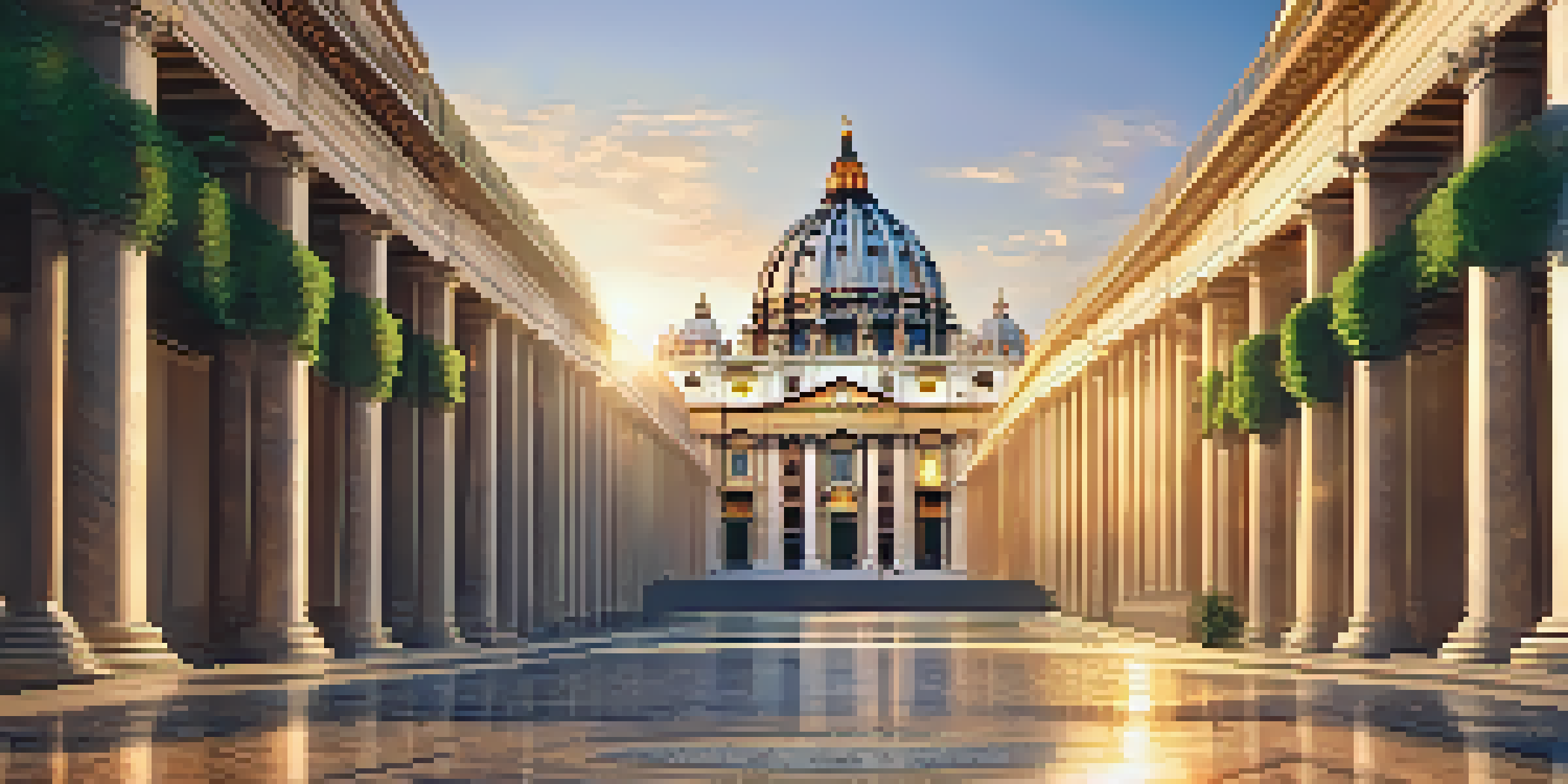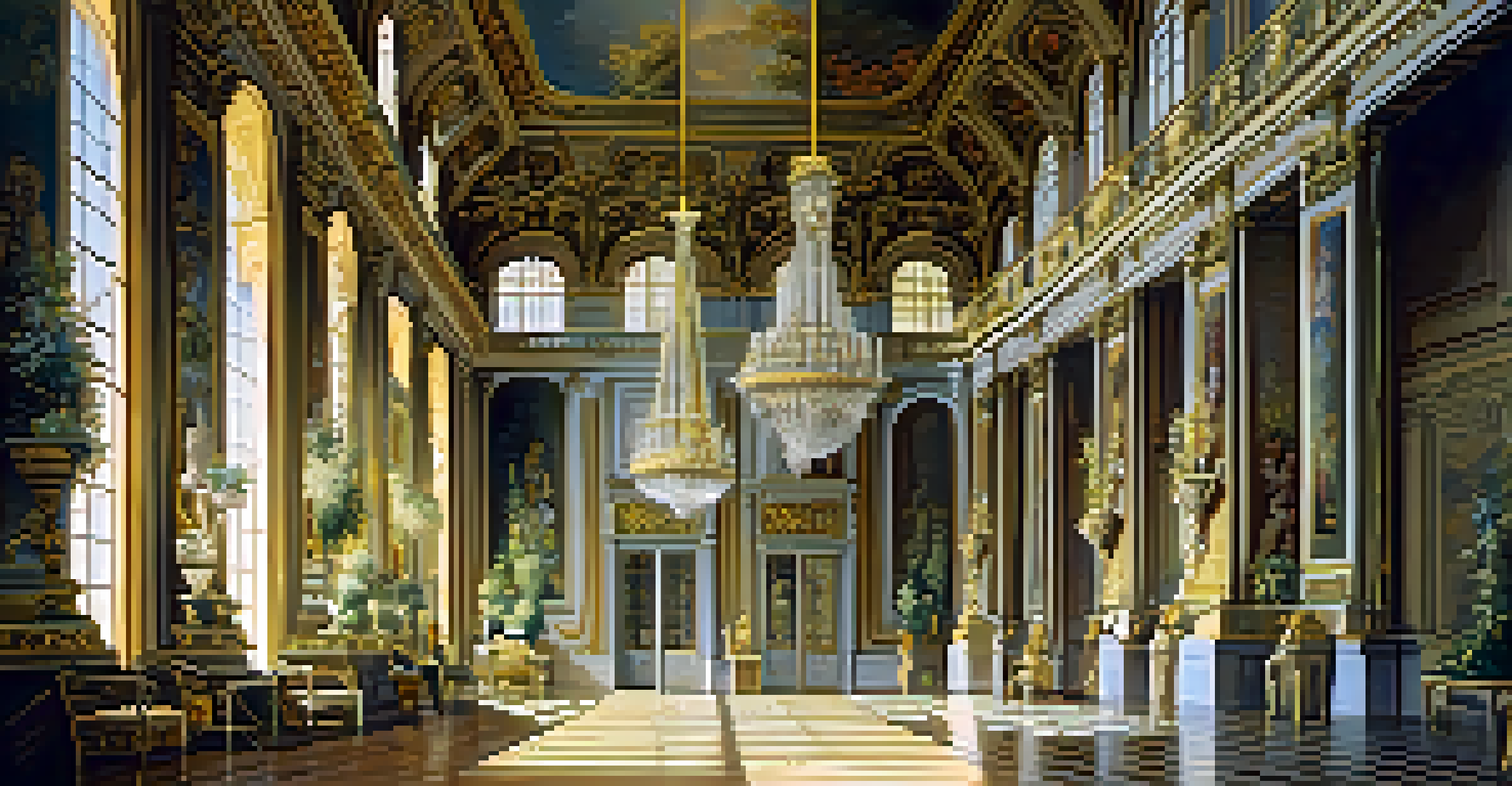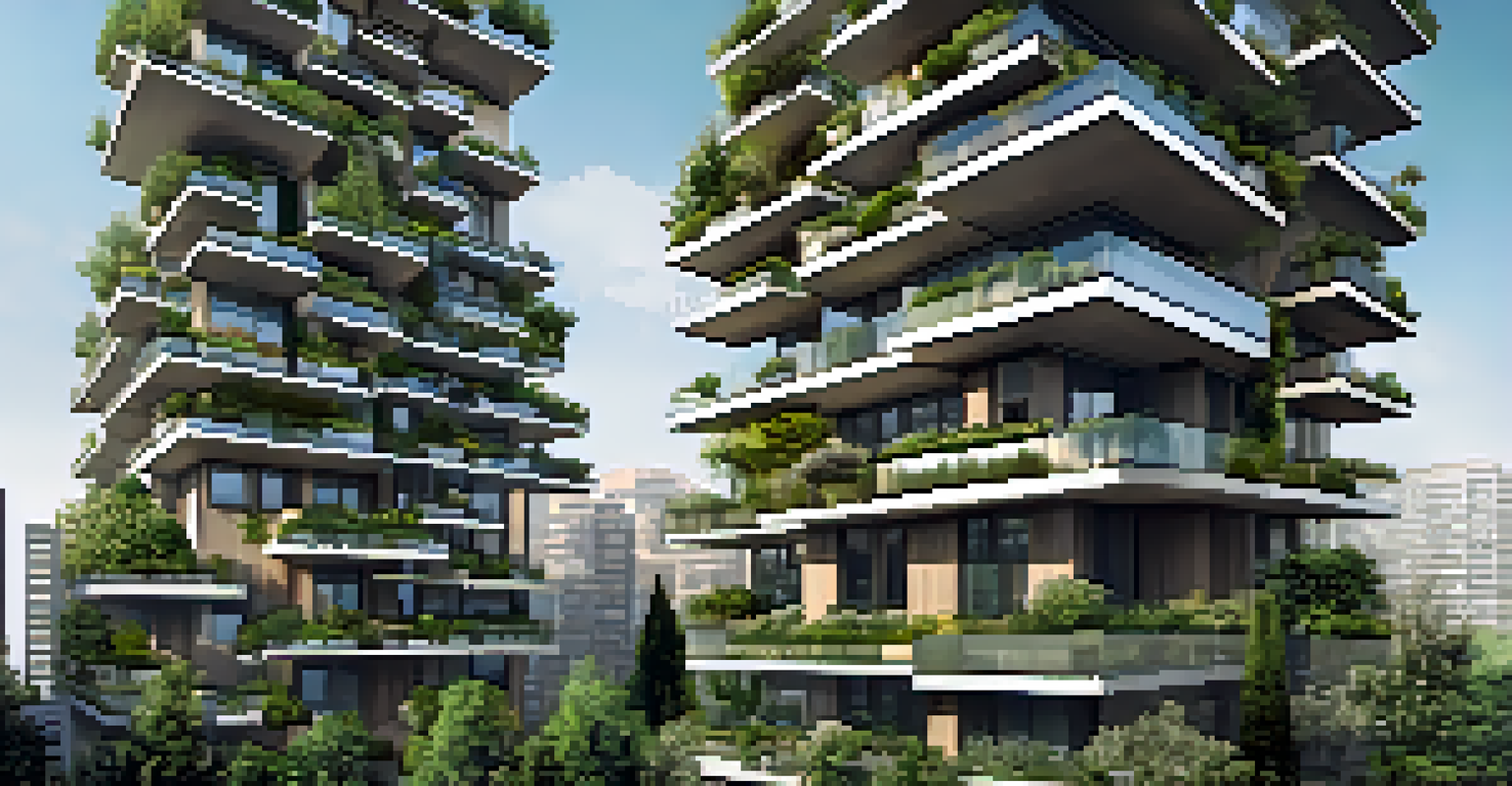Historical Influences of Art Movements on Architecture

The Renaissance: A Rebirth of Classical Ideals
The Renaissance marked a significant turning point in art and architecture, reviving classical antiquity's ideals. Architects like Filippo Brunelleschi embraced symmetry and proportion, which were hallmarks of Roman structures.
Architecture is the art of how to waste space.
This era saw the emergence of grand buildings, such as St. Peter's Basilica, showcasing the blend of art and architecture. The use of columns, domes, and open spaces reflected a newfound appreciation for harmony and balance.
As artists like Michelangelo and Raphael contributed to this movement, their influence extended beyond painting into the architectural realm, creating a holistic cultural revival that shaped future styles.
Baroque Architecture: Drama and Emotion
The Baroque period introduced a sense of drama and extravagance to architecture, characterized by bold forms and elaborate details. This movement was a reaction to the simplicity of the Renaissance, aiming to evoke emotional responses from viewers.

Famous structures like the Palace of Versailles exemplify this style, featuring grand staircases, opulent decorations, and expansive gardens that merge art with architecture. The interplay of light and shadow played a crucial role in creating dynamic spaces.
Art Movements Shape Architecture
Throughout history, various art movements have significantly influenced architectural styles, creating a dynamic interplay between visual expression and structural design.
As Baroque artists and architects collaborated, the lines between different forms of art blurred, resulting in environments that were immersive and captivating, reflecting the era's desire for grandeur.
Neoclassicism: A Return to Order and Simplicity
Neoclassicism emerged as a counter-movement to the excesses of Baroque, focusing on simplicity and clarity inspired by ancient Greece and Rome. Architects like Thomas Jefferson embraced these principles, emphasizing symmetry and proportion in their designs.
Less is more.
Structures such as the Panthéon in Paris and the U.S. Capitol showcase the use of columns and domes, echoing classical structures while promoting democratic ideals. This return to order resonated with the Enlightenment's values of reason and rationality.
Neoclassical architecture not only influenced governmental buildings but also shaped the public's perception of art and culture, reinforcing the connection between aesthetics and civic identity.
Romanticism: Nature and Emotion in Design
Romanticism arose as a response to the Industrial Revolution, emphasizing emotion and the natural world in architecture. This movement sought to evoke feelings of awe and nostalgia, often incorporating organic forms and picturesque landscapes.
Buildings like the Palace of Westminster in London reflect this sensibility, blending Gothic revival styles with an appreciation for nature. The use of intricate details, such as pointed arches and decorative elements, aimed to create a sense of wonder.
Sustainable Design for the Future
Sustainable architecture integrates artistic vision with ecological responsibility, promoting environmentally-friendly designs that enhance urban living.
Romantic architects drew on historical styles while infusing personal expression, paving the way for a more individualistic approach to design that resonated with the public's longing for connection to nature.
Modernism: Functionality Meets Artistic Expression
Modernism shattered traditional conventions, prioritizing functionality and minimalism in architecture. Influenced by movements like Cubism and Abstract Expressionism, architects sought to create spaces that reflected the modern lifestyle.
Buildings such as the Villa Savoye by Le Corbusier exemplify this philosophy, featuring clean lines and open floor plans that emphasized simplicity and efficiency. The idea that form follows function became a guiding principle.
As modernist architecture evolved, it embraced new materials and technologies, allowing for innovative designs that redefined urban landscapes and expressed the spirit of progress.
Postmodernism: A Playful Reaction to Modernism
Postmodernism emerged as a playful critique of the rigidity of modernism, reintroducing historical references and eclectic styles. Architects like Michael Graves and Robert Venturi challenged the notion of a singular architectural language.
Buildings such as the Portland Building showcased bright colors, whimsical shapes, and decorative elements that celebrated individual expression. This movement encouraged a dialogue between past and present, allowing for rich narratives in design.
Emotional Responses in Design
Architectural styles like Baroque and Romanticism evoke emotional responses through intricate designs and an appreciation for nature, reflecting cultural values of their time.
Postmodern architecture reflects society's complexity, embracing diversity and encouraging a sense of place, reminding us that architecture is not just about function but also about meaning.
Sustainable Architecture: Art for the Future
As awareness of environmental issues grew, sustainable architecture emerged, merging artistic vision with ecological responsibility. This movement emphasizes the use of renewable materials and energy-efficient designs to minimize environmental impact.
Buildings like the Bosco Verticale in Milan showcase how architecture can harmonize with nature, incorporating greenery and promoting biodiversity. This approach not only enhances aesthetics but also improves the quality of urban living.

Sustainable architecture reflects a broader cultural shift towards stewardship and sustainability, demonstrating that art and architecture can play a crucial role in shaping a healthier planet for future generations.
Conclusion: The Interconnected Journey of Art and Architecture
Throughout history, art movements have profoundly influenced architectural styles, creating a dynamic interplay between visual expression and structural design. Each movement, from Renaissance to sustainable architecture, has left its mark on how we perceive and interact with our built environment.
Understanding this interconnected journey allows us to appreciate the cultural and historical contexts that shape our surroundings, reminding us that architecture is more than mere buildings; it's a reflection of our values and aspirations.
As we look to the future, the fusion of art and architecture continues to evolve, inviting us to reimagine the spaces we inhabit and inspire us to create a more harmonious world.